13 Antique Dishware Sets That Are Worth More Than You Think
Antique dishware sets often carry more than just sentimental value; they can be quite valuable as collectibles. Over the years, some sets have become rare and are now worth far more than when they were first produced. Understanding what makes these sets special can help you uncover hidden treasures. If you are a collector or just curious, it is time to find out which pieces may be worth more than you think. Let us take a closer look at these dishware sets and their growing value.
This post may contain affiliate links, which helps keep this content free. Please read our disclosure for more info.
Royal Worcester Evesham (1960s)
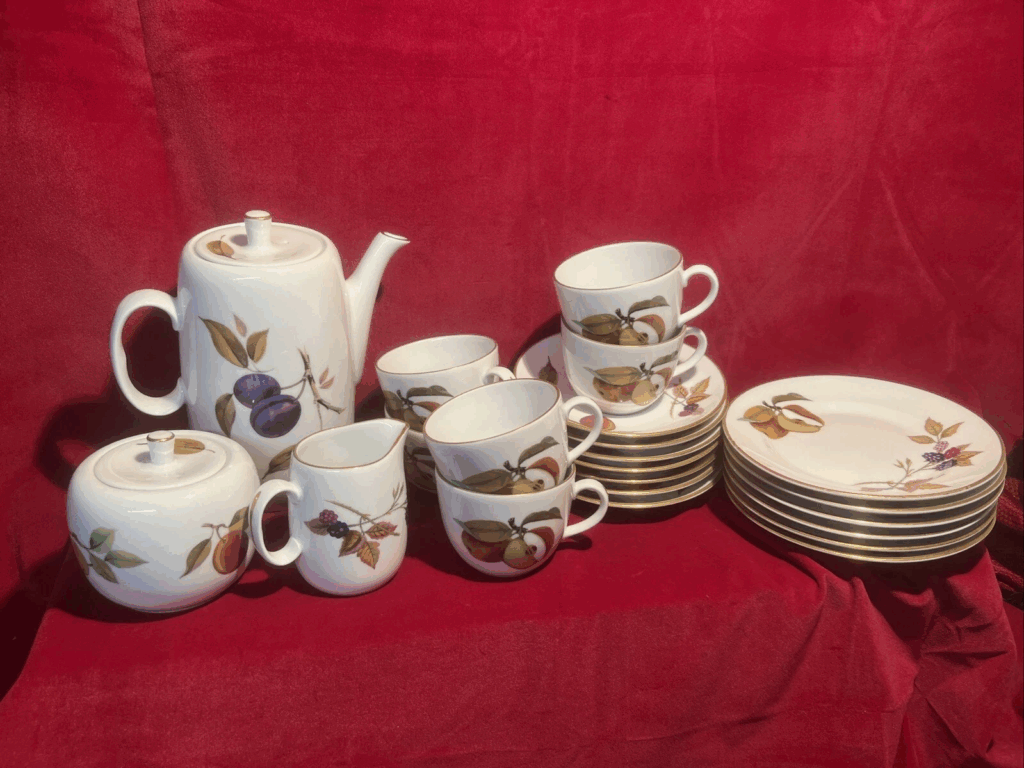
The Royal Worcester Evesham pattern was first released in the 1960s, featuring delicate fruit and floral designs on white porcelain. Known for its quality and elegance, the set has become highly sought after by collectors. A full set in excellent condition can fetch anywhere from $500 to $1,000. The pattern’s timeless appeal and the durability of Royal Worcester porcelain contribute to its increased value.
Collectors are drawn to the vintage charm of this set, which often appears in estate sales and antique shops. The set’s popularity has only grown over the years, as it remains a symbol of refined dining. Finding a complete, well-maintained set is rare, which adds to its desirability. Royal Worcester’s reputation for high-quality craftsmanship further elevates its worth in today’s market.
Lenox Autumn (1970s)

Lenox Autumn was introduced in the 1970s, featuring rich gold accents and fall-inspired designs. The pattern became a favorite for those looking for elegant yet approachable dinnerware. The current value of a set can range from $400 to $800, depending on condition and the number of pieces. Its vibrant autumn leaves design and gold trim make it a standout in any collection.
Over the years, Lenox Autumn has remained a popular choice for collectors due to its timeless beauty. The delicate combination of white porcelain and hand-painted details makes it a highly prized set. The pattern’s association with the high-quality craftsmanship of Lenox adds to its overall market value. Today, it is often featured in auctions and antique stores, with well-preserved sets commanding higher prices.
Wedgwood Queensware (18th Century)
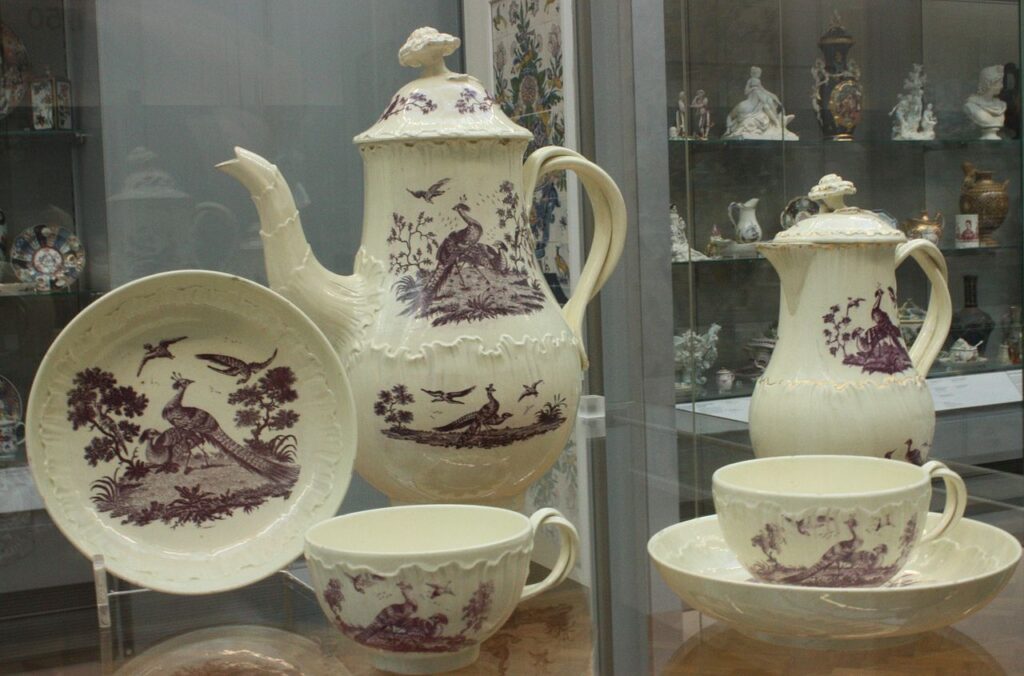
First introduced in the 18th century, it is a classic example of fine English pottery. The soft cream color and elegant design have made it highly collectible, especially in complete sets. A set can range in price from $1,000 to $4,000, depending on the rarity and condition of the pieces. The history and craftsmanship of Wedgwood pottery contribute greatly to its ongoing value.
Wedgwood Queensware was popular during the Georgian period, known for its exceptional quality and craftsmanship. Many collectors seek out rare patterns and special editions, making this set even more valuable. The historical significance of this porcelain adds to its allure, with pieces often held in high regard by antique buyers. Collectors focus on well-preserved examples that showcase the intricate details of the early Wedgwood designs.
Spode Christmas Tree (1938)

The Spode Christmas Tree pattern was first introduced in 1938 and has become an iconic part of holiday traditions. This charming design features a decorated Christmas tree on fine porcelain, and its popularity has only grown over the decades. A full set today can be valued anywhere from $300 to $1,500, especially if the pieces are in pristine condition. Its nostalgic appeal and association with holiday celebrations make it a favorite among collectors.
Spode Christmas Tree has remained a beloved holiday dinnerware set due to its timeless design and durable construction. The pattern’s history and the reputation of Spode’s craftsmanship contribute to its rising market value. Some limited-edition pieces can command even higher prices. The continued demand for this festive set during the holiday season helps sustain its high value in the collector’s market.
Noritake Vintage (1940s-1950s)

Noritake Vintage dinnerware was produced in the mid-20th century and features delicate floral designs with a gold rim. Known for its fine porcelain and high-quality craftsmanship, the set has become a favorite among collectors of vintage dishware. Prices for a full set typically range from $500 to $1,200, depending on the condition of the pieces and the number in the set. Its simple elegance and craftsmanship make it a sought-after collectible.
The quality of Noritake porcelain and its association with fine dining add to the value of this set. Noritake pieces are often passed down through generations, which increases their rarity and desirability. The floral patterns and gold accents make the set suitable for both formal and everyday use. As the popularity of vintage Noritake increases, so does the price for well-maintained sets.
Villeroy and Boch Old Luxembourg (18th Century)
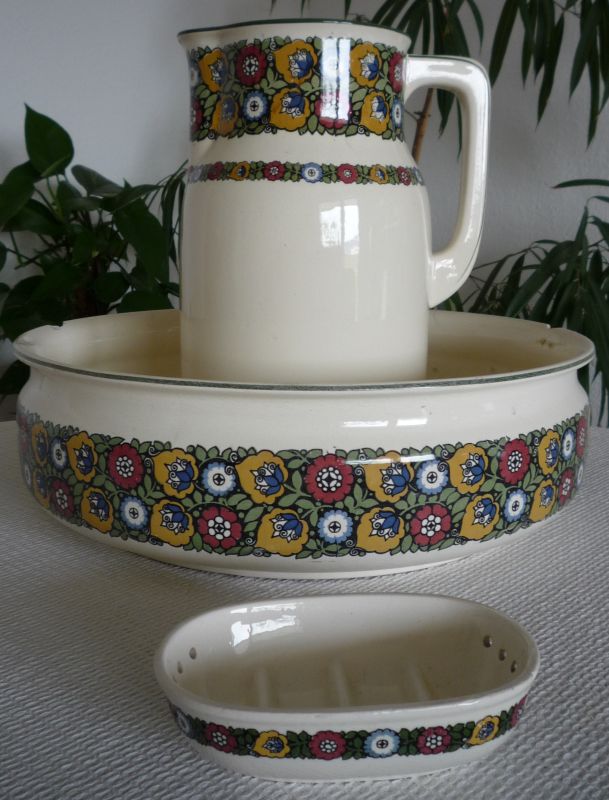
Dates back to the 18th century, known for its timeless blue-and-white design. This elegant pattern features floral motifs and a classic design that has become a staple in antique dishware collections. A full set can range in value from $1,000 to $3,000, depending on its condition and the rarity of the pieces. The historical significance of this design adds to its value in the market.
Old Luxembourg has remained a popular choice for collectors due to its durable construction and classic style. The pattern’s design was inspired by traditional European porcelain, which has only increased its value over the years. Rare or early editions of the pattern are especially prized, making them a worthy investment for collectors. The continued demand for this porcelain set ensures its high market value.
Royal Dalton Burgundy (1990s)
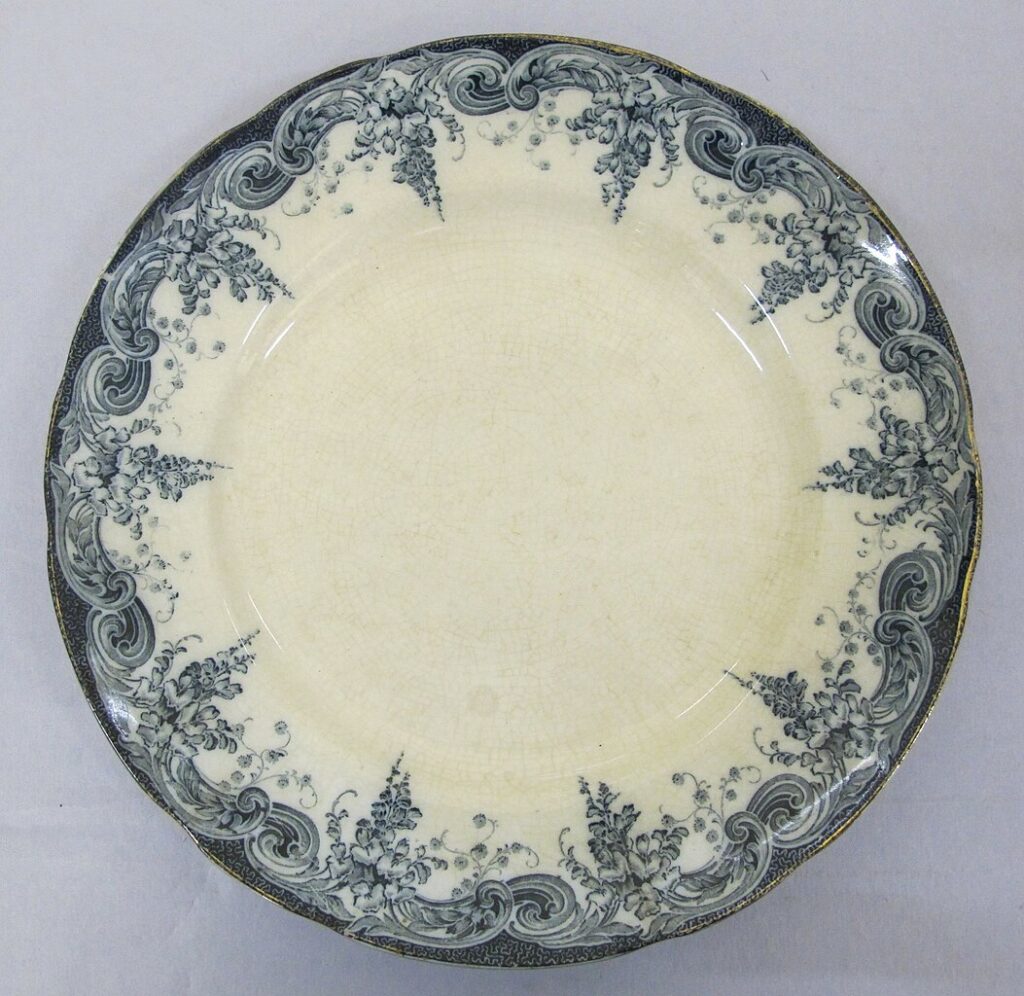
Royal Dalton’s Burgundy pattern was introduced in the 1990s and features a rich, deep red floral design on white porcelain. The elegant color combination and fine craftsmanship make this set highly collectible. A complete set can be worth anywhere from $500 to $1,200, depending on the pieces included and their condition. The set’s timeless appeal and association with Royal Dalton’s reputation for quality add to its growing value.
The Burgundy pattern has been popular for both formal and casual dining due to its versatile design. The durability of the porcelain ensures that the set will last for years, making it a valuable collectible. The set’s combination of color and floral details continues to attract collectors who appreciate vintage dinnerware. As demand for Royal Dalton increases, so does the value of pieces from the Burgundy collection.
Meissen Porcelain (18th Century)

Meissen Porcelain, produced in Germany since the early 18th century, is considered some of the finest porcelain ever made. Known for its intricate designs and high-quality craftsmanship, it is one of the most coveted antique dishware sets in the world. A set can be valued at anywhere from $2,000 to $10,000, depending on the rarity and condition. The historical significance of Meissen and the craftsmanship behind each piece contribute to its high market value.
The Meissen factory was one of the first in Europe to produce true porcelain, and its pieces are considered highly collectible. The intricate designs, often featuring floral patterns or mythical figures, make Meissen porcelain especially sought after. Collectors look for rare or limited-edition pieces, which are priced higher due to their scarcity. Meissen porcelain continues to be highly regarded, ensuring its continued rise in value.
Mikasa Italian Countryside (1990s)
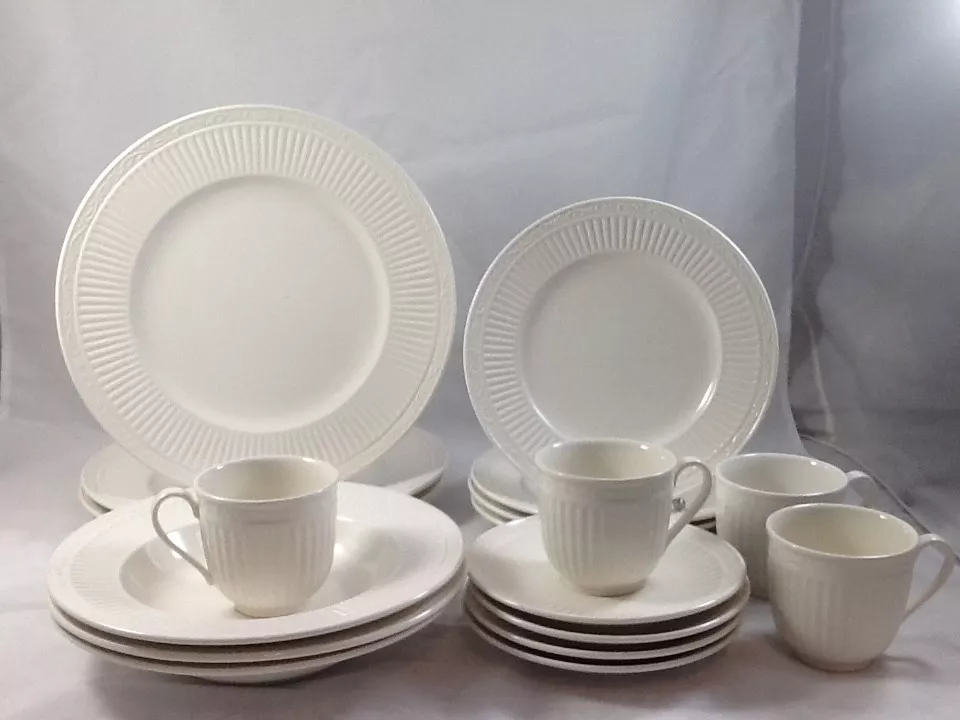
Mikasa’s Italian Countryside pattern, released in the 1990s, features a simple yet elegant design inspired by rustic Italian dining. The design’s versatility and timeless charm have made it popular for both casual and formal settings. The current value of a set can range from $400 to $1,200, depending on the condition and number of pieces. The quality and lasting appeal of Mikasa’s Italian Countryside make it a prized collection piece.
Collectors appreciate the understated elegance of the Italian Countryside pattern, which pairs well with a variety of table settings. Mikasa’s reputation for producing durable and affordable porcelain contributes to the popularity of this pattern. The value of the set has risen due to its classic design, which remains relevant in modern times. Well-maintained sets with original packaging are highly desirable in the collector’s market.
Wedgwood Jasperware (19th Century)
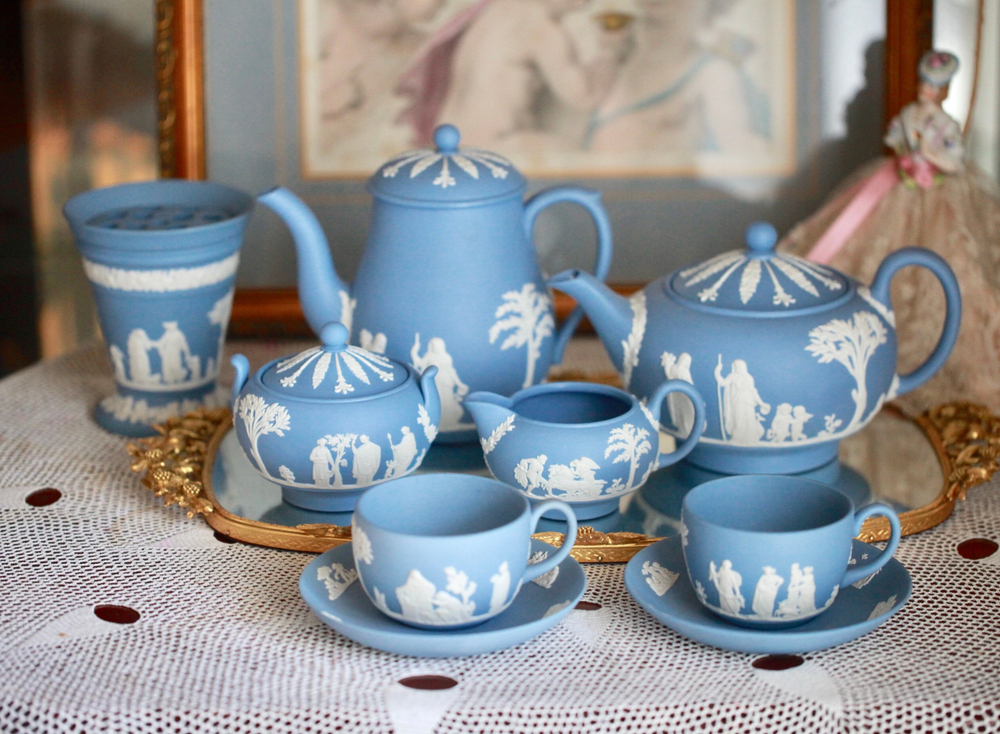
This was introduced in the 19th century, is known for its distinctive matte finish and classical designs. The most iconic pieces feature white figures and reliefs set against a colored background, typically blue or green. A complete set of Jasperware can be worth anywhere from $1,000 to $5,000, depending on the rarity and condition of the items. The craftsmanship and historical significance of Wedgwood contribute greatly to its value.
Wedgwood Jasperware is highly regarded for its unique appearance and the quality of its production. The figures often depict scenes from Greek and Roman mythology, which adds to the timeless appeal of the set. Antique pieces from the 19th century are especially valuable, as they are harder to find in excellent condition. The continued popularity of Wedgwood porcelain ensures that its market value will remain high.
Haviland Limoges (19th Century)
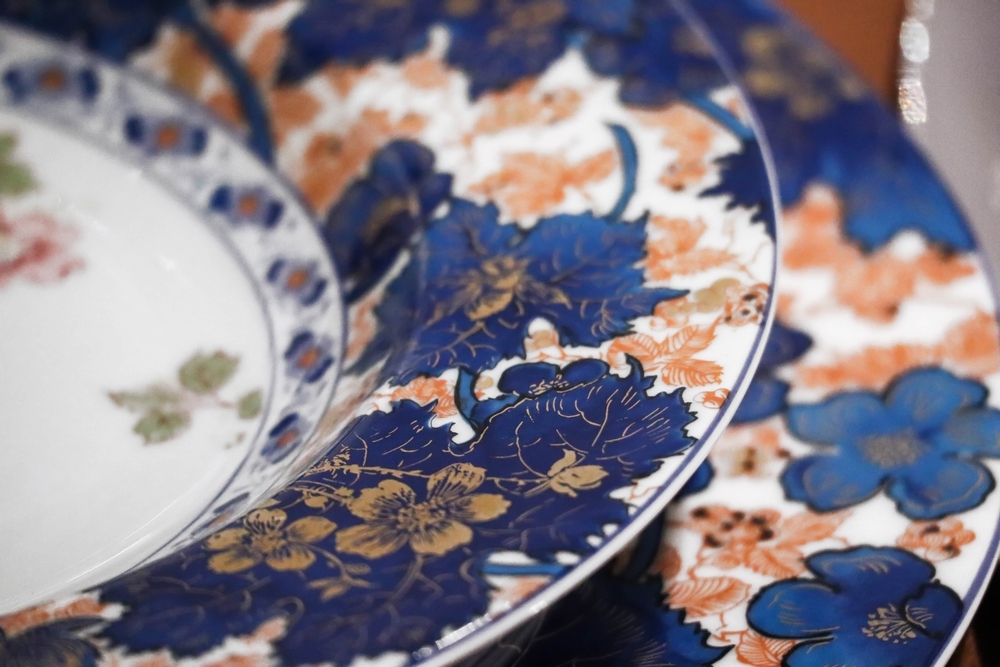
Haviland Limoges, produced in France during the 19th century, is known for its fine china and delicate floral designs. The porcelain is celebrated for its high quality and has remained a sought-after collectible over the years. A full set can range from $500 to $3,000, depending on the condition and rarity of the pieces. Haviland Limoges remains one of the most highly regarded names in the world of antique dishware.
Collectors are drawn to Haviland Limoges for its finely detailed patterns and the history behind the porcelain factory. The company has been producing fine china since the 1800s, and many of its pieces have historical significance. The value of Haviland Limoges pieces has grown over time, with specific patterns or editions fetching higher prices. A well-maintained set is highly prized by collectors and can be a valuable asset.
Royal Copenhagen Flora Danica (18th Century)
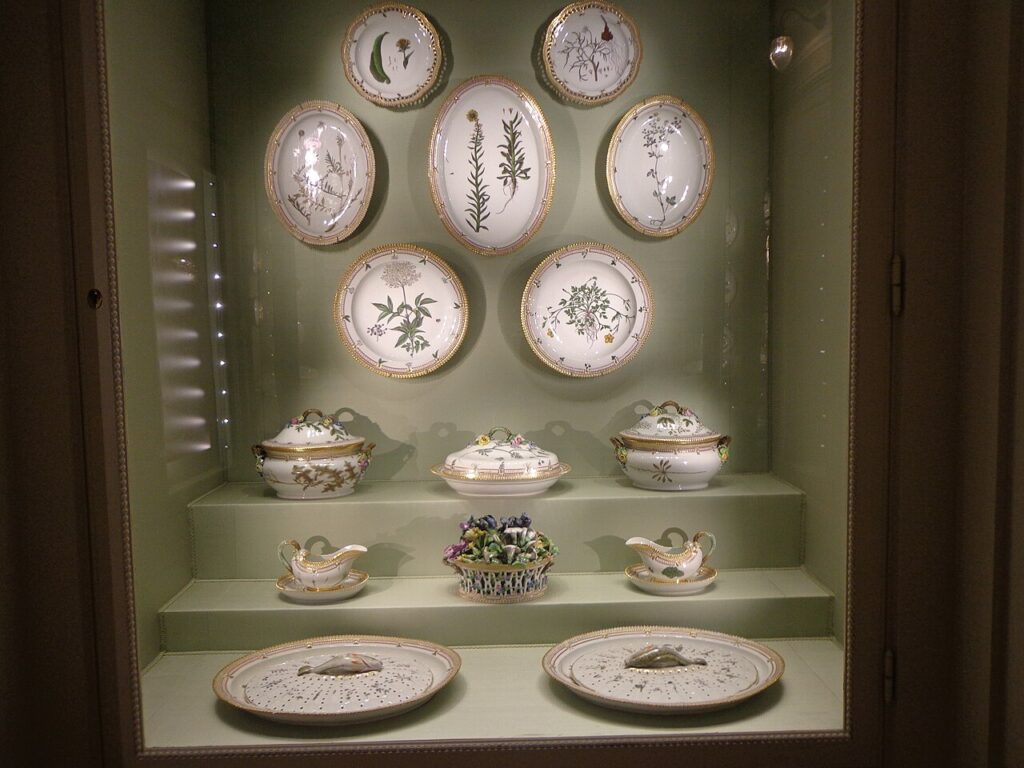
First introduced in the 18th century, the features exquisitely detailed depictions of plants and flowers native to Denmark. Known for its remarkable craftsmanship and intricate details, this pattern is highly sought after by collectors. A complete set can fetch between $5,000 and $20,000, depending on the condition and number of pieces. The value of the set is influenced by its historical significance and rarity.
Flora Danica is a celebrated collection due to its detailed hand-painted designs, which make each piece unique. The pattern was originally commissioned for the Danish royal family, adding to its royal appeal. Pieces from the early production run are especially valuable, as they are harder to find in pristine condition. The fine porcelain and beautiful floral artwork ensure that this set remains a favorite among collectors.
Hutschenreuther Blue Onion (18th Century)
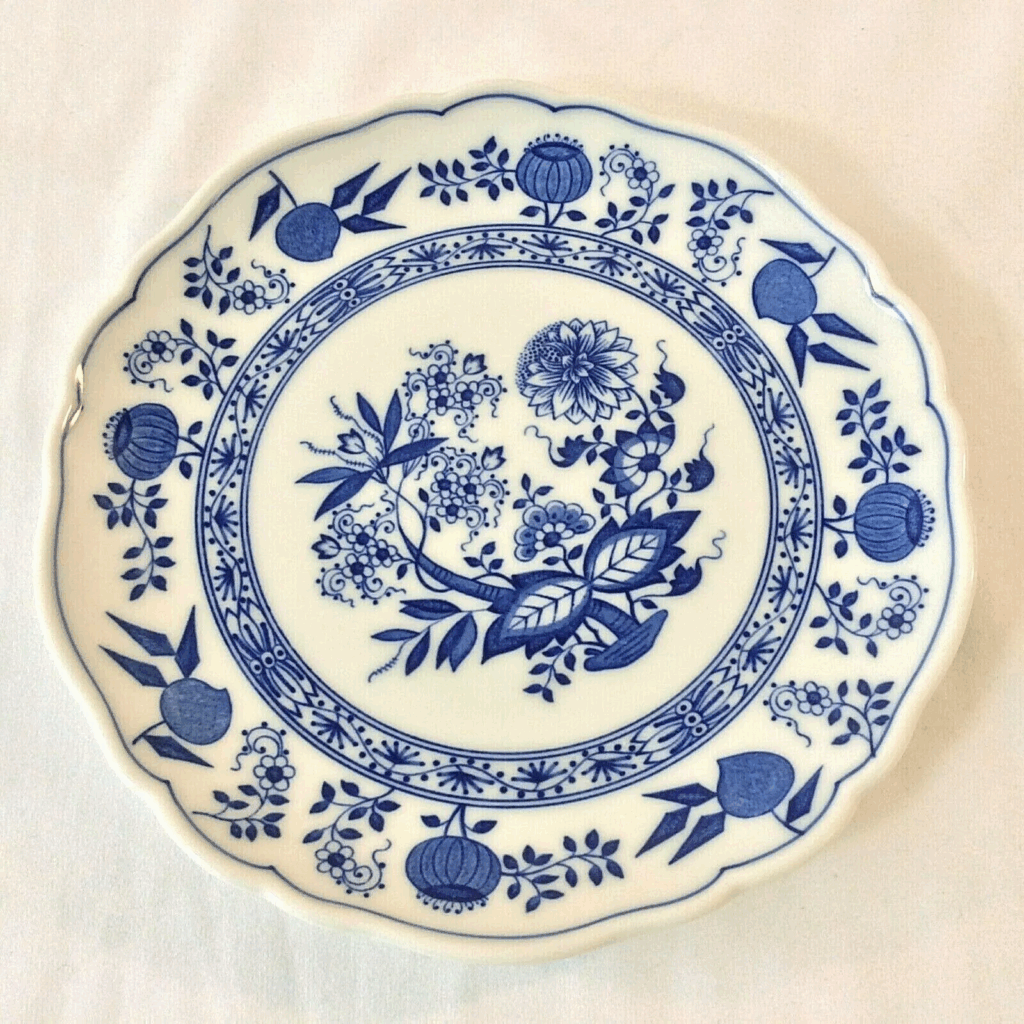
Hutschenreuther’s Blue Onion pattern, created in the 18th century, is one of the most recognized porcelain designs in the world. The pattern features delicate blue floral designs on fine white porcelain and has been highly sought after by collectors. The set can be valued anywhere from $1,500 to $5,000, depending on the rarity and condition. Its cultural significance and historical roots add to its appeal.
The Blue Onion pattern was originally created by the Hutschenreuther family in Germany, and it became famous for its intricate detailing and elegant design. Over the years, this pattern has been produced in various forms and sizes, increasing its availability in antique markets. Antique versions from the 18th century are highly valued due to their age and rarity. The combination of craftsmanship, design, and history makes Blue Onion a highly collectible pattern.
Antique dishware holds more than just sentimental value; some sets can be worth much more than you might expect. Their craftsmanship and historical significance make them highly desirable to collectors. By understanding the value of these sets, you can make informed decisions when purchasing or selling vintage dishware. These items can enrich your collection while growing in worth, offering both beauty and investment potential.
This article originally appeared on Avocadu.
